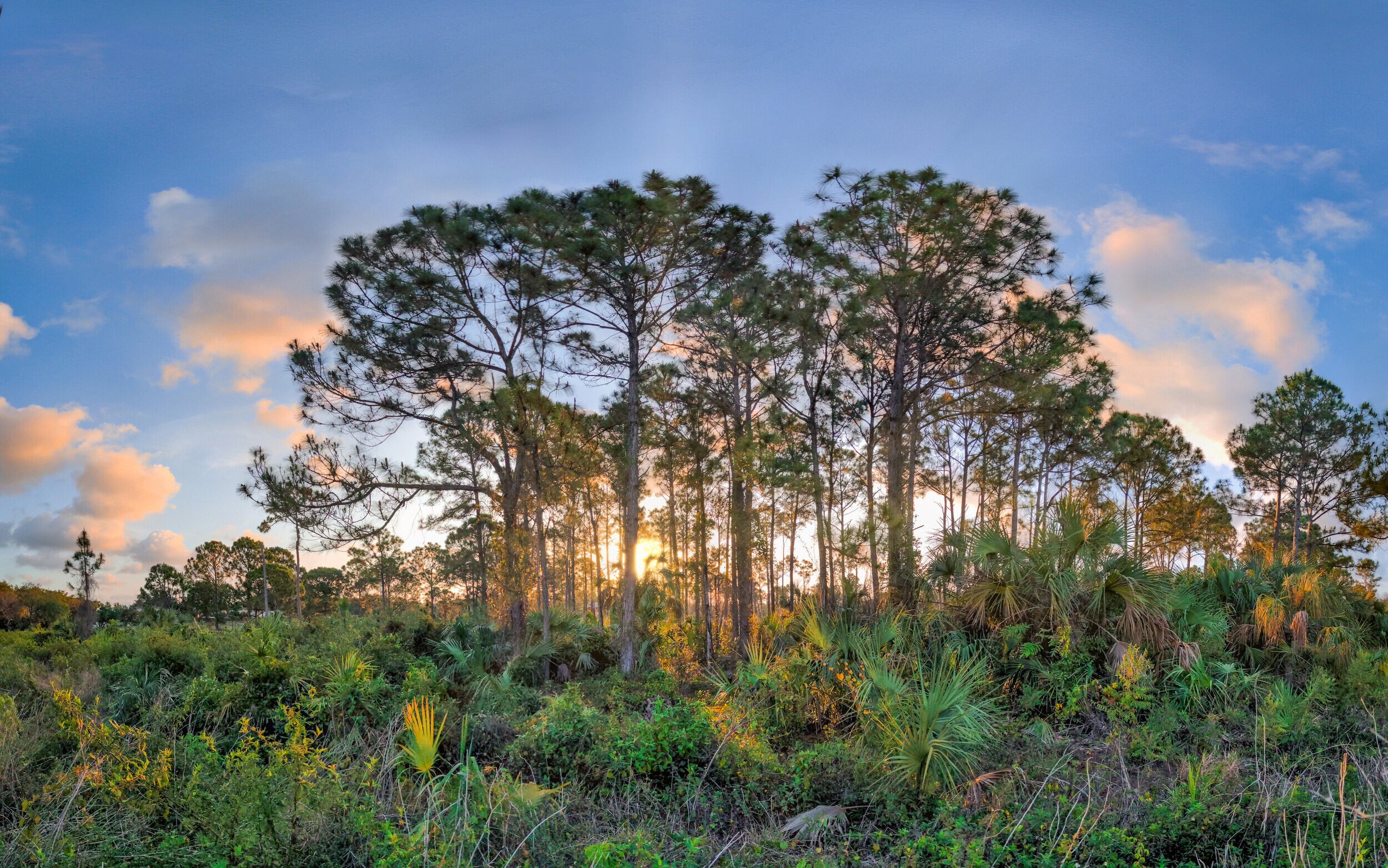
What Should I Plant?
To maximize the success of your planting it’s important to know a bit about the local ecology. South Florida’s biome is driven by water. Plant communities can vary greatly with small changes in elevation, which determine how wet or dry a site is. From dry to wet, here are the common ecosystems you may have had at home in Miami-Dade county:
Pine Rockland Forest - High and dry, these are the best places to build and so have the most loss from development. There is a large pine rockland next to Zoo Miami.
Hardwood Hammock - Intermediate elevation, hammocks are dense forests of tremendous diversity (shown above). The Deering Estate has a beautiful hammock you should visit.
Cypress Forest - Wet and waterfront, cypress and pond apple forests are often found in flooded areas and provide important fishing perches for birds. You can see the original snapper creek at Pinecrest Gardens.
Coastal / Salty - Mangroves along the waterline transition to salt-tolerant plants further inland. The trails of Matheson Hammock Park are a great place to see this yourself.
There are other important ecosystems in the Everglades that you might like to learn about, click here to learn more and here’s a list of great local hikes so you can see them for yourself.
What Should I Plant?
We’ve made it easy, pick from the following list based on where you’re planting or what you’re trying to achieve. Is the area:
High and dry? Plant a pine Rockland
Sometimes wet? Plant a Hardwood Hammock
Wet / waterfront? Plant a Cypress Wetland
Are you trying to:
Attract butterflies? Plant a pollinator garden
Hide a fence? Plant a native hedge
Cut back on CO2? Plant an Eco lawn
Mosquito control? Plant dragonfly attracting plants
Each of these ecosystems have hundreds of other species and the lists below can never do it justice. This is just meant to be a starting point and if you can find other appropriate species please use them!
High and Dry - Pine Rockland
Check out these plants for a site that is rocky or has well draining soil:
Slash Pine - the famous “Dade County Pine”
Saw Palmetto - Important food and shelter source
Coontie - Larval host for the Atala butterfly
Pineland Croton - Pretty, great butterfly support
The Guidelines for Planting a Pine Rockland has some great information if you want to learn more.
Sometimes Wet - Hardwood Hammock
These plants work well in a site that gets water but doesn’t usually flood:
Gumbo Limbo - Large canopy tree with beautiful bark
Willow Bustic - Medium tree with good pollinator support
Wild Tamarind - Large, fast growing
Satin Leaf - Medium, beautiful leaves
Pigeon Plum - Edible fruit and attracts birds
Dahoon Holly - Attractive small tree, get both a male and female
Wet / Waterfront
These plants work well along canals and can tolerate regular flooding with fresh water:
Cypress - Beautiful swamp tree with delicate leaves
Pond Apple - Important Everglades native
Southern Red Maple - Beautiful red fall colors
Blue Flag Iris - Beautiful flowers and interesting thin leaves
Pollinator Garden
Use a variety of the plants below as caterpillars and adult butterflies feed from different species:
Milkweed - Larval host for the Monarch butterfly
Corkystem Passionvine - Larval host for many butterflies
Firebush - One of Florida’s best plants for attracting butterflies and birds
Blue Porterweed - Great nectar source
Spanish Needle - A “weed” that you may already have
Check out these tips and Zoo Miami’s list of native plants for attracting butterflies to learn more.
Native Hedges
These plants make great hedges that feeds the wildlife and bring birds to your yard. Mix them up for variety instead of planting all of the same kind:
Marlberry - Super wildlife supporter
Jamaica Caper - Beautiful flowers (pictured at left)
Simpson’s Stopper - A hearty hedge plant with fragrant flowers
Crabwood - Dense beautiful hedge tree
Myrsine - Smooth green foliage
Eco Lawn
These ground cover plants make great lawns that feeds pollinators and don’t require mowing or fertilizer:
Sunshine Mimosa - beautiful pink flowers and leaves that move when touched
Frog Fruit / Creeping Charlie - fast growing ground cover that supports a number of pollinators
Herb-of-Grace - a mat-forming ground cover that is great for wetter areas
I have each of these at my house and it’s like walking on a carpet surrounded by butterflies.
Mosquito Control
These plants can repel mosquitoes and attract dragonflies that eat them:
Beautyberry - Lives up to its name!
Wax Myrtle - Crushed leaves were used as insect repellant
Fog fruit
Common Natives
What about Live Oak, Mahogany and Black Olive? We love these native trees but they are already widely planted throughout South Florida. Since biodiversity is our goal we recommend planting something else. And if you already have the plants we’ve recommended above, try something new.
Ready to Get Started?
Check out our planting tips for some suggestions on how to get better results.









